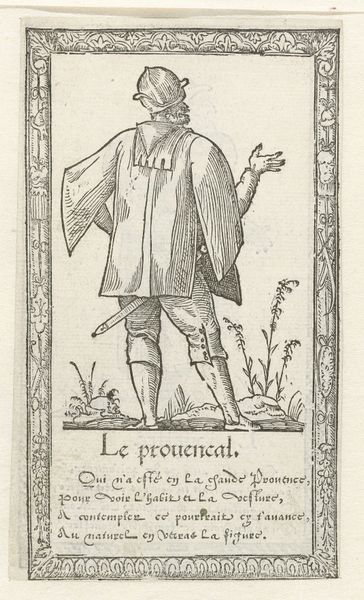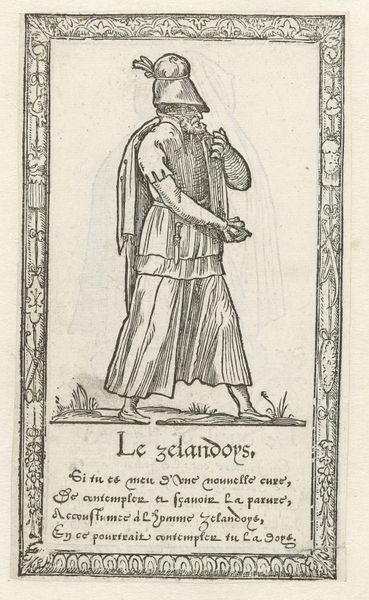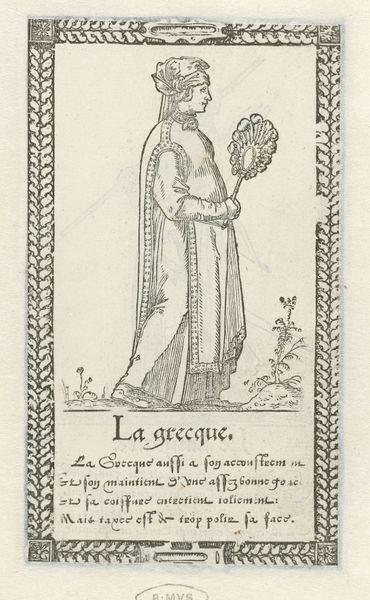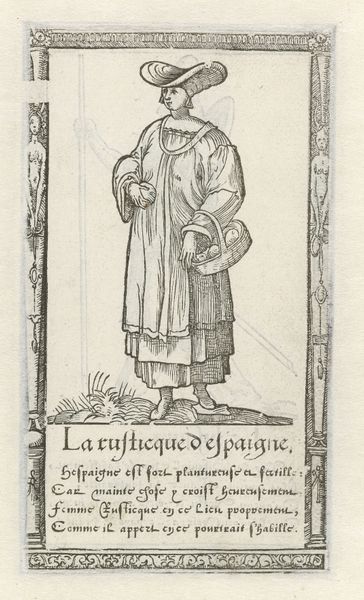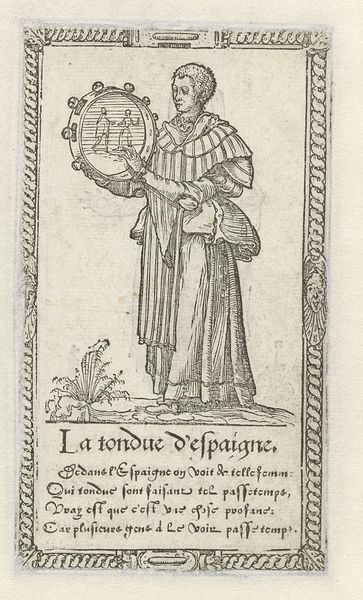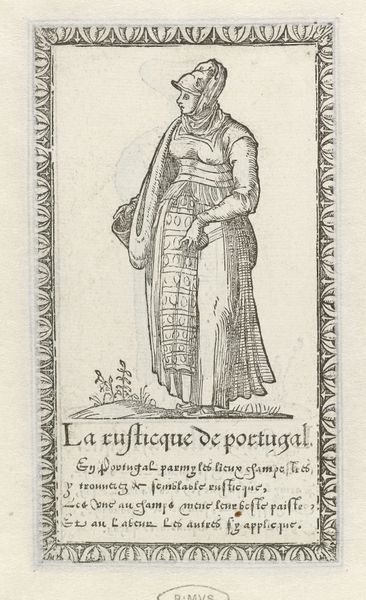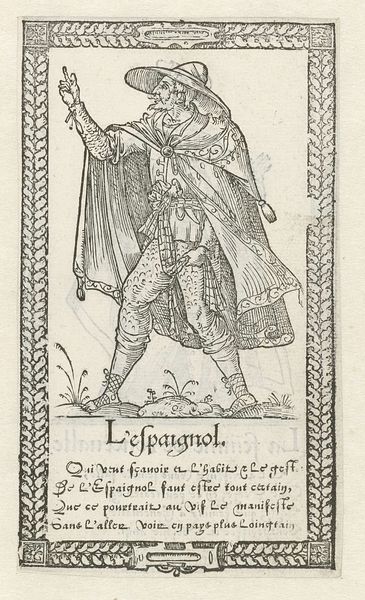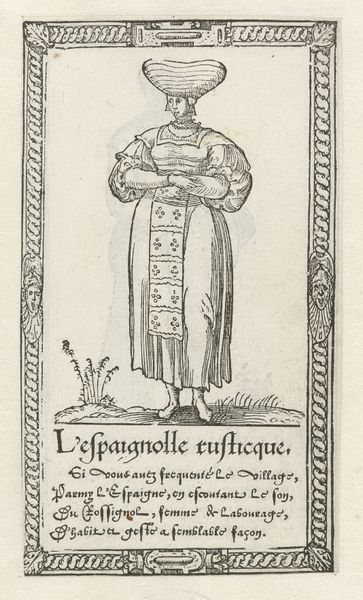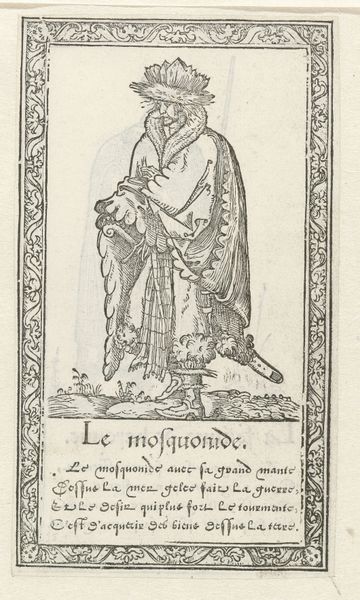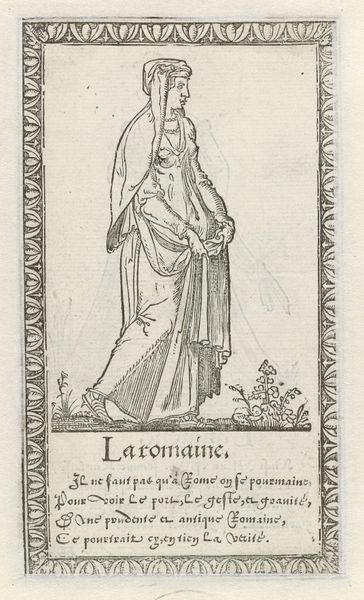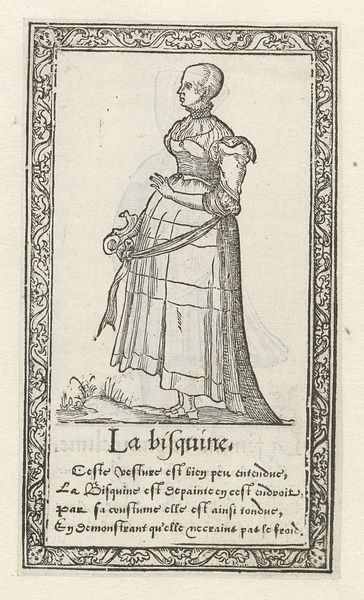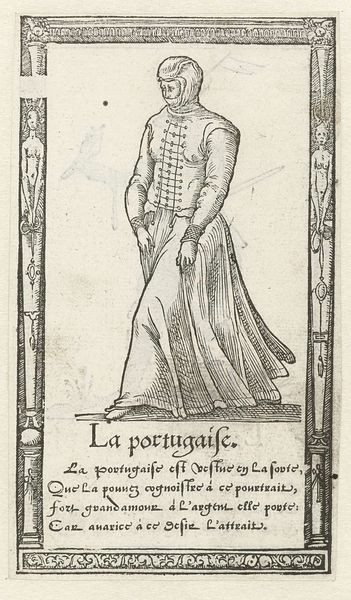
drawing, print, ink, engraving
#
portrait
#
drawing
#
narrative-art
# print
#
old engraving style
#
figuration
#
11_renaissance
#
ink
#
line
#
history-painting
#
northern-renaissance
#
academic-art
#
engraving
Dimensions: height 148 mm, width 87 mm
Copyright: Rijks Museum: Open Domain
Editor: This is "Man uit Piëmont" by François Desprez, created in 1562. It’s an engraving in ink, and I'm struck by the detail in the clothing. It’s a portrait, but it feels more like a study of a particular social type. What stands out to you about the materials and method of production? Curator: The beauty of an engraving like this is its accessibility. Printmaking democratized images. Consider the labor involved: the artist meticulously cuts into a metal plate, each line a physical act of replication, allowing for dissemination and consumption. What does this suggest about the subject, a "Man from Piedmont," being presented to a wider audience? Editor: That’s a great point. I guess I hadn't thought about the production influencing how people viewed this “type.” Was it meant to be flattering? I notice there’s text too. Curator: Look closer at the tools potentially hanging from his belt and ask yourself: Are these signifiers of trade, or are they symbols laden with other implications that might give hints about what sort of labor the sitter might be involved with? Are these perhaps linked to his social standing or perceived role within the 16th-century economy and labor system? Editor: The more you describe the materiality and how this was made for larger distribution, the more this feels like a social commentary more than a simple portrait. I am especially wondering now if his hat is some sort of visual marker. Curator: Precisely! It underscores the intertwined nature of art, labor, and the social context in which both the art and sitter existed. Editor: That’s helped me appreciate how even seemingly simple works can reveal intricate connections to material processes and societal viewpoints. Curator: And that a deeper understanding can stem from appreciating not only what is depicted, but HOW it was created and consumed.
Comments
No comments
Be the first to comment and join the conversation on the ultimate creative platform.
